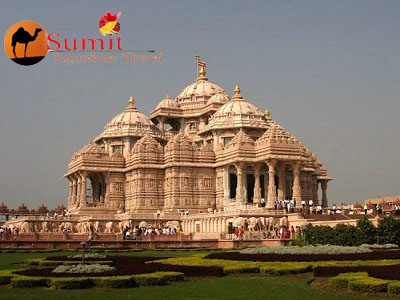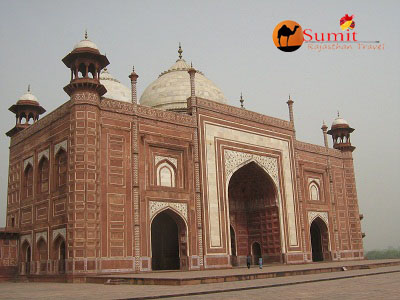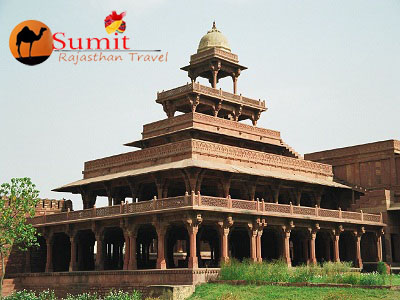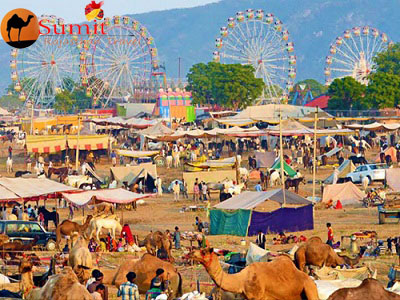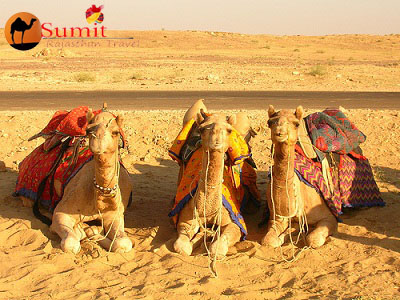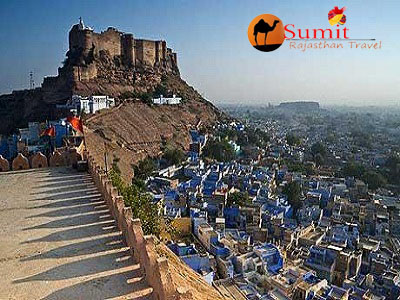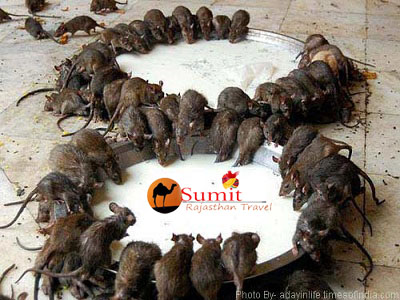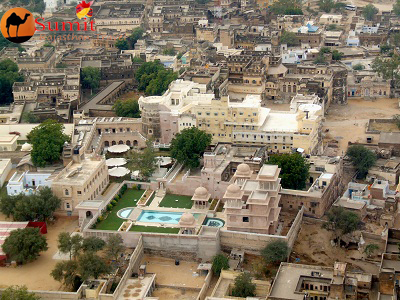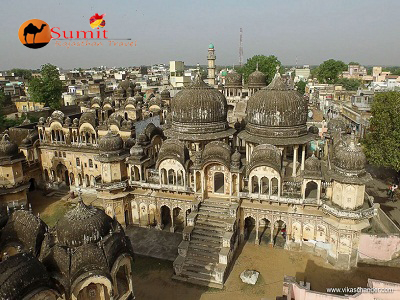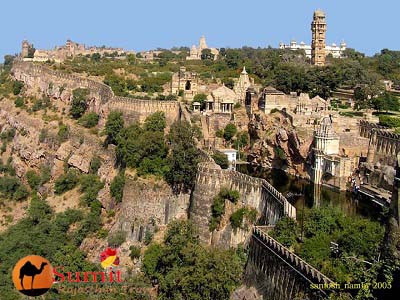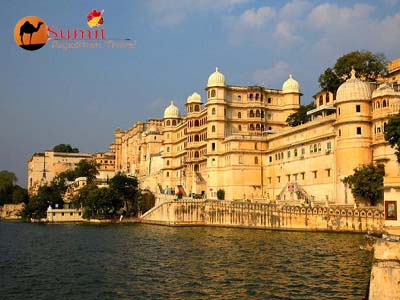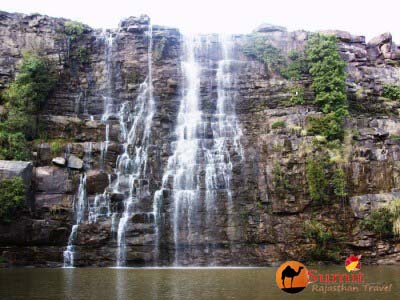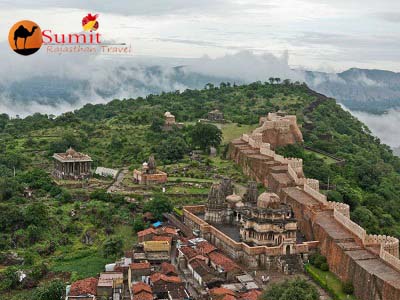Day 1: Arrival at Delhi Airport; pick up and transfer to the hotel; after relaxing and fresh up in the hotel sightseeing in Old Delhi(Red Fort, Jama Masjid, Chandni Chowk, Rajghat) and New Delhi(Humayun's Tomb: Bahai Temple, Qutub Minar: Gandhi Smiriti: India Gate ,Rashtrapati Bhavan); overnight in Delhi. .)
Click To More Detail About Delhi Sightseeing Tour
Day 2: After breakfast drive to Agra; visiting baby Taj Mahal , Agra Fort, at sunset time visiting Taj Mahal; overnight in Agra
Click To More Detail About Agra Sightseeing Tour
Day 3:After breakfast drive to Jaipur; on the way visiting Fatehpur Sikri, Abhaneri and the monkey temple in Jaipur; overnight in Jaipur.
Day 4:After breakfast visiting Amber fort; afterward going for city tour in Jaipur (Palace of the Winds, Waterpalace, Citypalace, Jantar Mantar, Museum , pink city local market, ); overnight in Jaipur .
Click To More Detail About Jaipur Sightseeing Tour
Day 5: After breakfast drive to Pushkar; visiting the Brahma Temple, the nice old market and the ghats around the Pushkar lake; overnight in Pushkar.
Pushkar: Pushkar is a town Bordering the Thar Desert, in the northeastern Indian state of Rajasthan. It's set on Pushkar Lake, a sacred Hindu site with 52 ghats (stone staircases) where pilgrims bathe. The town has hundreds of temples, including 14th-century Jagatpita Brahma Mandir, dedicated to the god of creation, which has a distinctive red spire and walls inlaid with pilgrims� silver coins
Day 6: After breakfast drive to Bundi visit Bundi palace, local market overnight in Bundi.
Bundi: Tourism in Bundi. The small, rustic town of Bundi was the capital of one of the erstwhile princely states of Rajasthan. It is known for its palaces, forts, baolis (step wells) and water tanks. The monuments and their architecture reflect the splendor of the local Rajput chiefs.
Day 7:After breakfast drive to Udaipur; Via Chittorgarh,overnight in Udaipur .
Chittorgarh:Chittorgarh, also called Chittaur, from the 7th century to the 16th, was the capital of Mewar under the Rajputs. Chittaur evokes memories of great heroism and sacrifice by Rajput men and women in the intermittent battles that they had to fight against invaders from Northwest or Delhi. Chittaur witnessed both the ravages of war and the triumphs of the spirit. Allaudin Khilji who coveted Queen Padmini of Chittaur, invaded the city in 1303 A.D. Queen Padmini and the women of the court sacrificed themselves in a pyre of fire rather than submit to anybody. This supreme sacrifice has been called 'Jauhar' and epitomises the fiery spirit of the Rajputs of the day. The city stands strewn with monuments and battlements as evidence of the blood and gore that it went through in medieval times.
Day 8:After breakfast visiting Udaipur (Citypalace, Jagdish-Tempel, Museum, Lake, market); overnight in Udaipur
Udaipur:Udaipur Sightseeing can be done as a day trip. Udaipur is referred to as the "Venice of the East", the "Most Romantic City of India" and the "Kashmir of Rajasthan" (a reference to Dal Lake) and not without reason. Tourists flock to this enchanting old & modern town in the heart of the Aravalli Mountains, which offers three interconnected lakes within the town - the Fateh Sagar Lake, the Lake Pichhola and the smaller Swaroop Sagar Lake; along with forts, palaces, temples, Gardens, mountains and narrow lanes lines withdrawn with stalls, relives the reminisces of a heroic past, valor and chivalry.
Duration: Full Day (8-9 hrs. approx)
City Palace:-
The grand City Palace, towering over the Pichola Lake, is one of the largest palace complex in Rajasthan. The splendid palace, originally built by Maharana Uday Singh II, rises 30 meters above Lake Pichola and extends up to 244 meters. The City Palace has number of small and big palaces, museums and the Gardens. There are many popular palaces inside the City Palace Complex. The unique aspect of this conglomeration is that the architectural design (a rich blend of Rajasthani, Mughal, Medieval, European and Chinese Architecture) is distinctly homogeneous and eye catching. The palace complex has been built entirely in granite and marble. The interiors of the palace complex with its balconies, towers and cupolas exhibit delicate mirror-work, marble-work, murals, wall paintings, silver-work, inlay-work and leftover of colored glass. The complex provides a fine view of the lake and the Udaipur city from its upper terraces. The palace is opens at 9:00 am & closes at 4:30 pm.
Jagdish Temple:-
Jagdish Temple is a large Hindu temple in the middle of Udaipur in Rajasthan. A big tourist attraction, the temple was originally called the temple of Jagannath Rai but is now called Jagdish-ji. Located 150m north of the palace in Indo-Aryan architectural style, the temple is dedicated to Lord Vishnu. The temple walls and the shikara or tower are decorated with carvings of Vishnu, scenes from Lord Krishna�s life and figurines of nymphs or apsaras. The street square, where the temple is located, is also known as Jagdish Chowk from where several roads radiate in different directions.
Dudh Talai:-
A small lake surrounded with beautiful, structured and precisely manicured Garden with fountains and beautiful rocks. A rock and fountain Garden and the sunset point from which one can enjoy the sunset view in Lake Pichhola and a panoramic view of the old city. Also one can enjoy the Aerial tramway (rope way) which connects one of the dudh talai Gardens to Karni Mata temple.
Pichola Lake:-
An artificial fresh water lake, created in the year 1362 AD, named after the nearby Picholi village. The lake�s surroundings and the several islands within the lake have been developed over the centuries, with palaces, marble temples, family mansions, and bathing ghats. The famous Lake Palace (now converted into a heritage hotel) is located in the middle of the lake. Two islands, Jag Niwas and Jag Mandir are located within Pichola Lake. Local buses, Tongas, auto-rickshaws and taxis provide the needed transport.
Fateh Sagar Lake:-
An artificial lake constructed by Maharana in north of Lake Pichola in 1678 and to the north-west of Udaipur. Within the confines of the Fateh Sagar Lake, there are three small islands.; the largest of these is called the Nehru Park, the second island houses a public park with an impressive water-jet fountain and the third island is the address for the Udaipur Solar Observatory. Every year a Festival called the Hariyali Amavasya Mela (Green New Moon Fair) is organized at the lake precincts,in the month of August/September.
Saheliyon Ki Bari:-
Built by Maharana Bhopal Singh. Saheliyon ki Bari means Garden of the Maids. This Garden area lies in northern part of the city and has fountains and kiosks, a lotus pool and marble elephants. Each water channel has its distinct sound and the mingling of these sounds complement the ambience of the place. There is also a small museum here. Sahelion Ki Bari’ was laid for a group of forty-eight young women attendants who accompanied a princess to Udaipur as part of her dowry.
Kumbhalgarh:-
Kumbhalgarh Fort is a Mewar fortress on the westerly range of Aravalli Hills, in the Rajsamand district of Rajasthan state in western India. It is a World Heritage Site included in Hill Forts of Rajasthan.
Ranakpur:-
Extremely popular among tourists, Ranakpur is a quaint town in Rajasthan and one of the five most important pilgrimage places of Jainism. Despite being cut off from other tourist destinations in Rajasthan, Ranakpur receives several visitors because of its status as a major pilgrim destination in the state. It is tucked away in a remote valley in the Aravali mountain range and is situated around 96 km north of Udaipur in the Pali district.This beautiful, serene place is renowned for some amazingly carved Jain temples constructed in amber stone around the year 1439 AD
Day 9:After breakfast drive to Jodhpur via khumbhalgarh and Ranakpur (Jain Temple); visit in Jodhpur the clocktower and the spice-market; overnight in Jodhpur.
About Mehrangargh :Mehrangarh Fort, located in Jodhpur, Rajasthan, is one of the largest forts in India. Built around 1460 by Rao Jodha, the fort is situated 410 feet above the city and is enclosed by imposing thick walls.
Day 10:After breakfast visit Mehrangargh fort; afterward drive to Jaisalmer; visiting Bada Bagh at sunset; overnight in Jaisalmer.
Day 11:After breakfast visit Jaisalmer Fort, visit local old city within the fort; afterward going for Khuri desert; camel Safari at sunset to the sand dunes; in the evening dinner with old traditional dance program; overnight in Khuri
Jaisalmer Fort:Jaisalmer Fort is one of the largest fortifications in the world. It is situated in the city of Jaisalmer, in the Indian state of Rajasthan. It is a World Heritage Site
Day 12:After breakfast drive to Bikaner; visiting the Karni Mata Temple in Deshnok and Junagarh fort; overnight in Bikaner .
Karni Mata Temple: Karni Mata was a female Hindu sage born in the Charan caste. She is worshiped as the incarnation of the goddess Durga by her followers. She is an official deity of the royal family of Jodhpur and Bikaner
Day 13:After breakfast drive to Mandawa via Fatehpur; visiting the Shekhawati region with old traditonal richly painted havelis; overnight in Mandawa .
Mandawa: Mandawa is a old haritage village and you there 500 years old rajputana havelis
Day 14:After breakfast drive to Delhi; overnight in Delhi .
Day 15: After breakfast drop at the airport for your flight back home.
